Peru & Bolivia
After breakfast we left our hotel and drove to the railway which is still used for transporting silver from the mines. From here we could see the active Ollague volcano on the border with Chile. We drove further through the Siloli Desert towards the border to a viewpoint at an altitude of 4200.
We then headed to the lagoons in the area. The first was the Canapa Lagoon where we saw lots of flamingos, then on to Hedionda (smelly, because of the sulphur) Lagoon where we had our lunch And then to the Honda Lagoon which is the deepest. Harry then drove us through a narrow canyon where we spotted some Viscacha ( Bolivian rabbits). After the canyon we drove through the Siloli Desert. The route passes through spectacular landscapes with multicolored volcanic rock formations, and reaches a height of 5000 metres. We then entered the National Reserve Eduardo Abaroa where we saw the Stone tree, eroded petrified volcanic lava.
Our next stop was the Colorada Lagoon which is at an altitude of 4250 metres and covers an area of 60 km2. The rich red coloration is derived from algae and plankton, which thrives in its minerals and the shoreline is fringed with brilliant white deposits of sodium, magnesium, borax and gypsum. The lagoon is inhabited by numerous flamingos, three species of which breed there. The Chilean flamingo reaches a height of just over one metre and has a black-tipped white bill, dirty blue legs, red knees and salmon-coloured plumage. The James flamingo is the smallest of the three species. The Andean flamingo is the largest of the three and has pink plumage, yell legs and a yellow and black bill.
We then headed to the town of Huayllajara to our hotel which had limited electricity hours. We sat round a stove in the dining area, had our dinner and went to bed in the unheated bedrooms to spend a chilly night wrapped in a sleeping bag and blankets.
ANDREA MILLS
27 chapters
14 Aug 2023
Day 2
Bolivia
After breakfast we left our hotel and drove to the railway which is still used for transporting silver from the mines. From here we could see the active Ollague volcano on the border with Chile. We drove further through the Siloli Desert towards the border to a viewpoint at an altitude of 4200.
We then headed to the lagoons in the area. The first was the Canapa Lagoon where we saw lots of flamingos, then on to Hedionda (smelly, because of the sulphur) Lagoon where we had our lunch And then to the Honda Lagoon which is the deepest. Harry then drove us through a narrow canyon where we spotted some Viscacha ( Bolivian rabbits). After the canyon we drove through the Siloli Desert. The route passes through spectacular landscapes with multicolored volcanic rock formations, and reaches a height of 5000 metres. We then entered the National Reserve Eduardo Abaroa where we saw the Stone tree, eroded petrified volcanic lava.
Our next stop was the Colorada Lagoon which is at an altitude of 4250 metres and covers an area of 60 km2. The rich red coloration is derived from algae and plankton, which thrives in its minerals and the shoreline is fringed with brilliant white deposits of sodium, magnesium, borax and gypsum. The lagoon is inhabited by numerous flamingos, three species of which breed there. The Chilean flamingo reaches a height of just over one metre and has a black-tipped white bill, dirty blue legs, red knees and salmon-coloured plumage. The James flamingo is the smallest of the three species. The Andean flamingo is the largest of the three and has pink plumage, yell legs and a yellow and black bill.
We then headed to the town of Huayllajara to our hotel which had limited electricity hours. We sat round a stove in the dining area, had our dinner and went to bed in the unheated bedrooms to spend a chilly night wrapped in a sleeping bag and blankets.
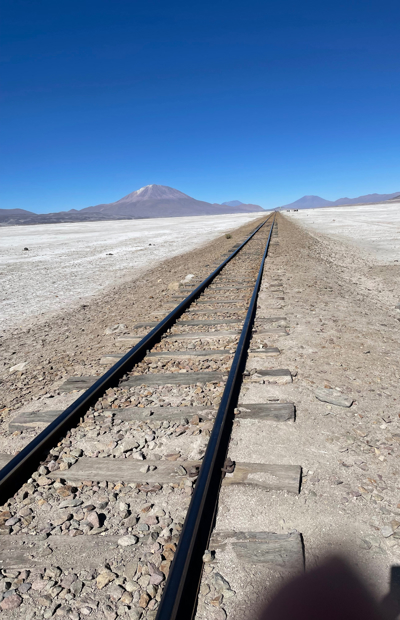
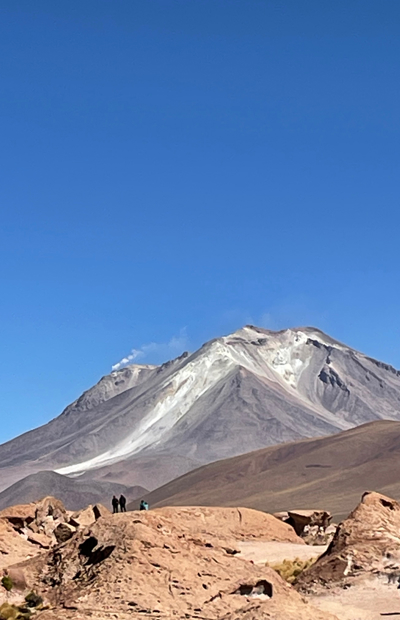
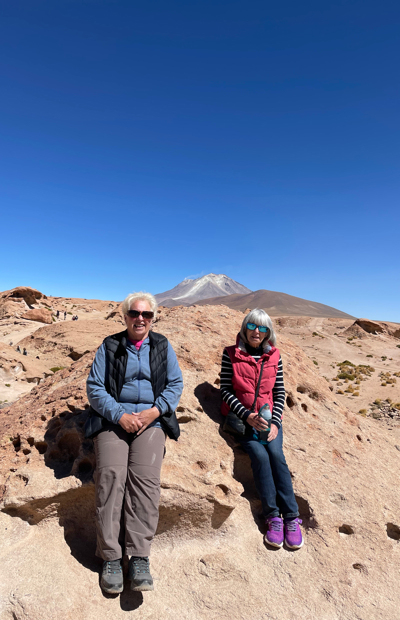
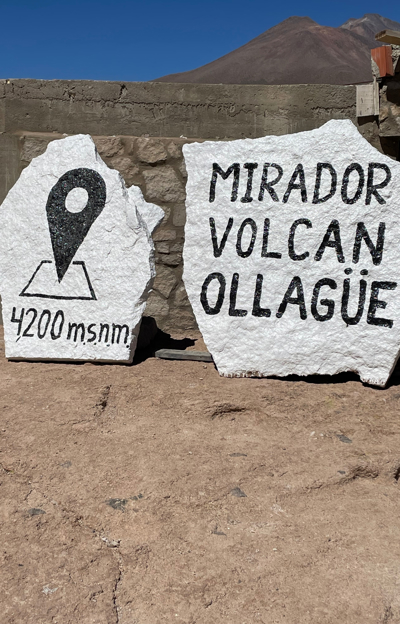
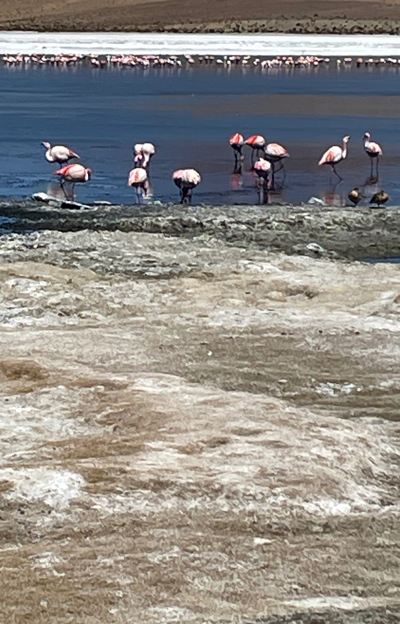
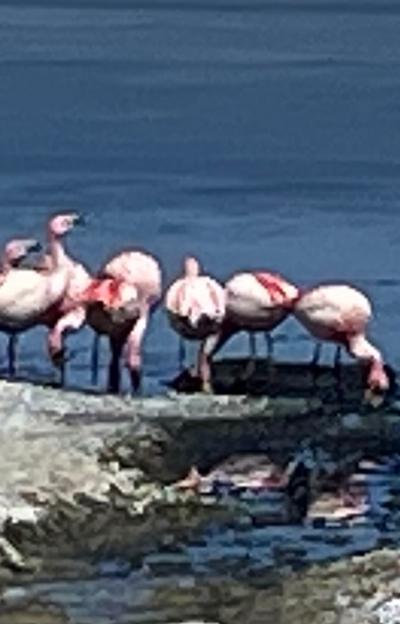
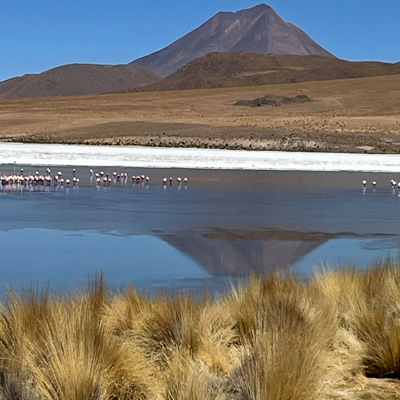
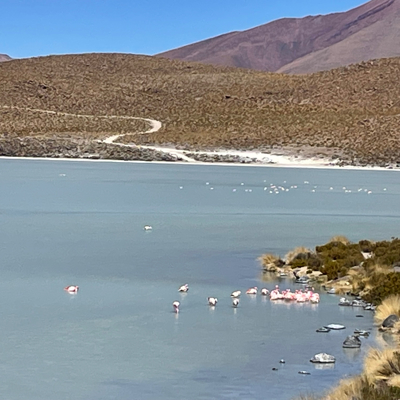
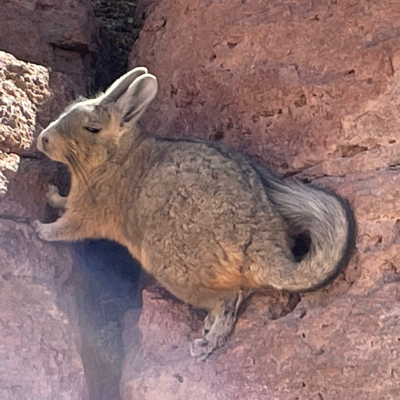
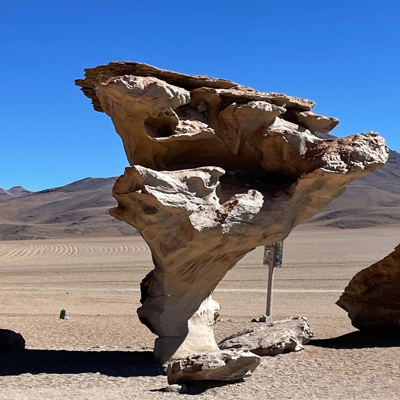
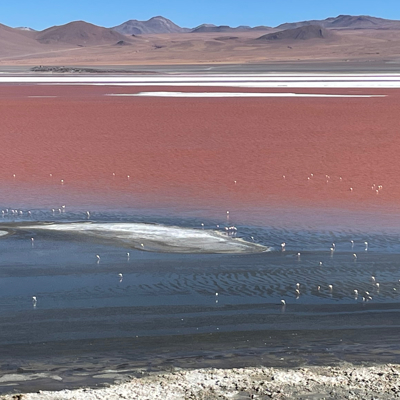

1.
On our way
2.
Miraflores and Barranco
3.
Discovering Lima
4.
Lima to Paracas
5.
Ballestas Islands
6.
Paracus to Huacachina
7.
Huacachina to Nazca
8.
Nazca lines
9.
Discovering Arequipa
10.
Journey to the Colca Canyon
11.
Colca Canyon
12.
Journey to Puno
13.
Lake Titicaca
14.
Puno to La Paz
15.
Exploring La Paz
16.
Discovering La Paz
17.
Day 1 of the tour
18.
Day 2
19.
Day 3
20.
Recuperating in La Paz
21.
Isla de Sol
22.
Train ride to Cusco
23.
Cusco
24.
Machu Picchu
25.
A last look at Cusco
26.
Going home
27.
Back home
Share your travel adventures like this!
Create your own travel blog in one step
Share with friends and family to follow your journey
Easy set up, no technical knowledge needed and unlimited storage!
© 2025 Travel Diaries. All rights reserved.